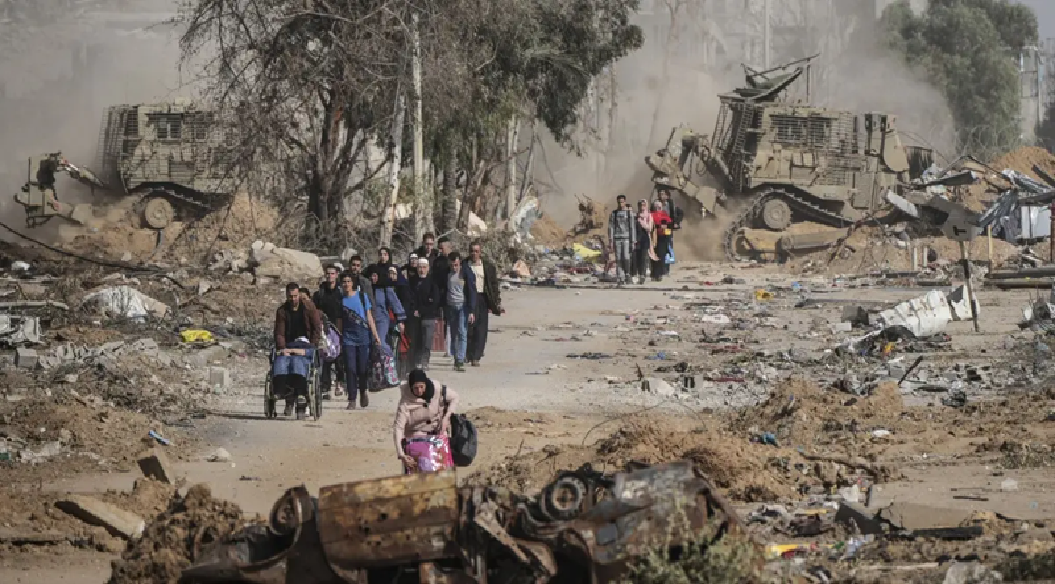.jpeg)
Stop the hypocrisy: US & Blinken’s Gaza ‘ceasefire’ is a sham
The recent visit of United States (US) Secretary of State Antony Blinken to Israel, Egypt, and Qatar was yet another futile diplomatic endeavour in the ongoing Gaza conflict. Despite American claims of seeking a ceasefire, the outcome was predictably disappointing.
The brutal reality in Gaza speaks volumes—over 40,000 Palestinians have perished, with more than 90,000 wounded. On the other side, Hamas’ attacks on October 7, 2023 resulted in over 1,100 Israeli deaths and 200 captives.
The tragedy continues to escalate, unchecked by the so-called peacemakers. Washington’s efforts to broker a ceasefire have been woefully inadequate, exposing a mixture of incompetence and hypocrisy.
The US is far from a neutral mediator in this conflict; it is an enabler of Israel’s war machine. Instead of genuinely seeking peace, the US appears more concerned with safeguarding its strategic ally, Israel, at the expense of Palestinian lives.
The peace process, therefore, is a charade—one that masks the harsh reality that the US is complicit in the ongoing genocide in Gaza. Efforts to involve Egypt, Qatar, and Saudi Arabia in the peace talks have been similarly ineffective.
Hamas remains skeptical of any agreement brokered by the US, accusing it of stalling to allow Israel to continue its onslaught.
The roles of Qatar and Egypt are largely superficial; they are mere conduits, passing messages between the US, Israel, and Palestinian resistance leaders. The notion that the US is seriously interested in halting the bloodshed is a farce.
The truth is, Washington has been buying time for Israeli PM Benjamin Netanyahu to execute his ultimate goal: the destruction of Palestinian resistance in Gaza. The ongoing carnage is not a failure of diplomacy but a deliberate strategy.
Since the onset of Israel’s genocidal campaign, the US has been preparing for a protracted and devastating conflict, one that serves its interests in the Middle East, even if it means the continued suffering of Palestinians.
The relentless Israeli attacks on schools, refugee camps (which the United Nations categorizes as safe zones), and civilian infrastructure further prove the genocidal intent behind this war.
Hamas has accused Israel of prolonging the conflict by imposing new conditions, despite its earlier readiness to consider a ceasefire. While Israel participates in peace talks, Hamas is conspicuously absent—a glaring indicator of the deep mistrust and hopelessness surrounding these negotiations.
Blinken’s repeated trips to the region have yielded nothing but empty promises. His ninth visit, like the previous ones, ended without any meaningful progress. The US is now desperately trying to salvage its position as the Gaza conflict risks spilling over into the broader Middle East.
The assassination of key figures like Hezbollah’s top commander and Hamas leader Ismail Haniyeh has further inflamed tensions, pushing the region closer to a wider conflict. Iran’s threats of retaliation and Hezbollah’s warnings signal a potential escalation that could have devastating consequences for the US and its allies.
As the November presidential election looms, Washington is scrambling to craft a peace deal. But this rush for a diplomatic solution is driven by selfinterest, not a genuine commitment to peace.
The US wants to avoid a regional conflagration that would undermine its strategic objectives in the Middle East. Yet, the hollow rhetoric of peace continues to ring in the ears of those who have lost everything in Gaza’s ongoing nightmare.
 English daily published in Bengaluru & Doha
English daily published in Bengaluru & Doha






